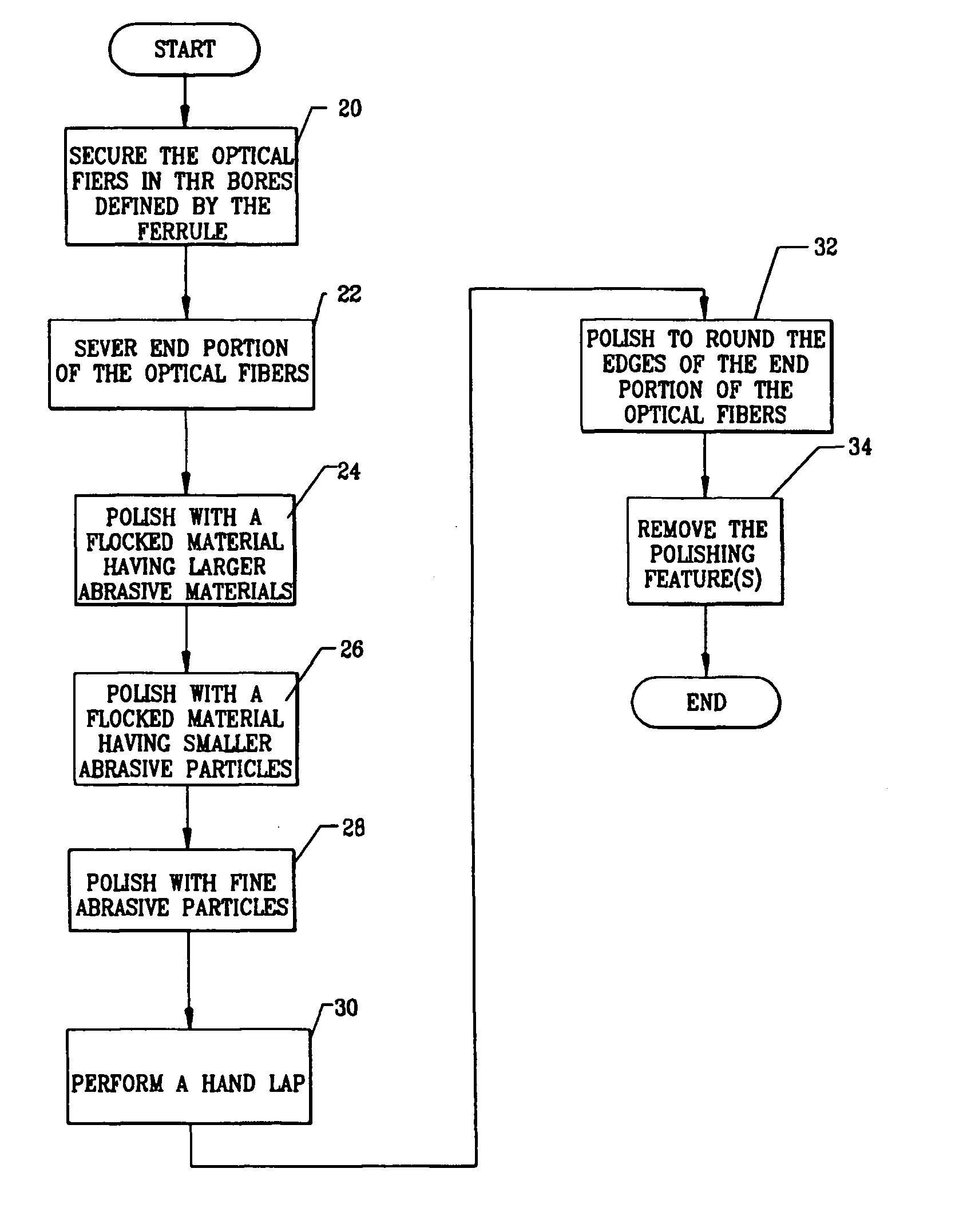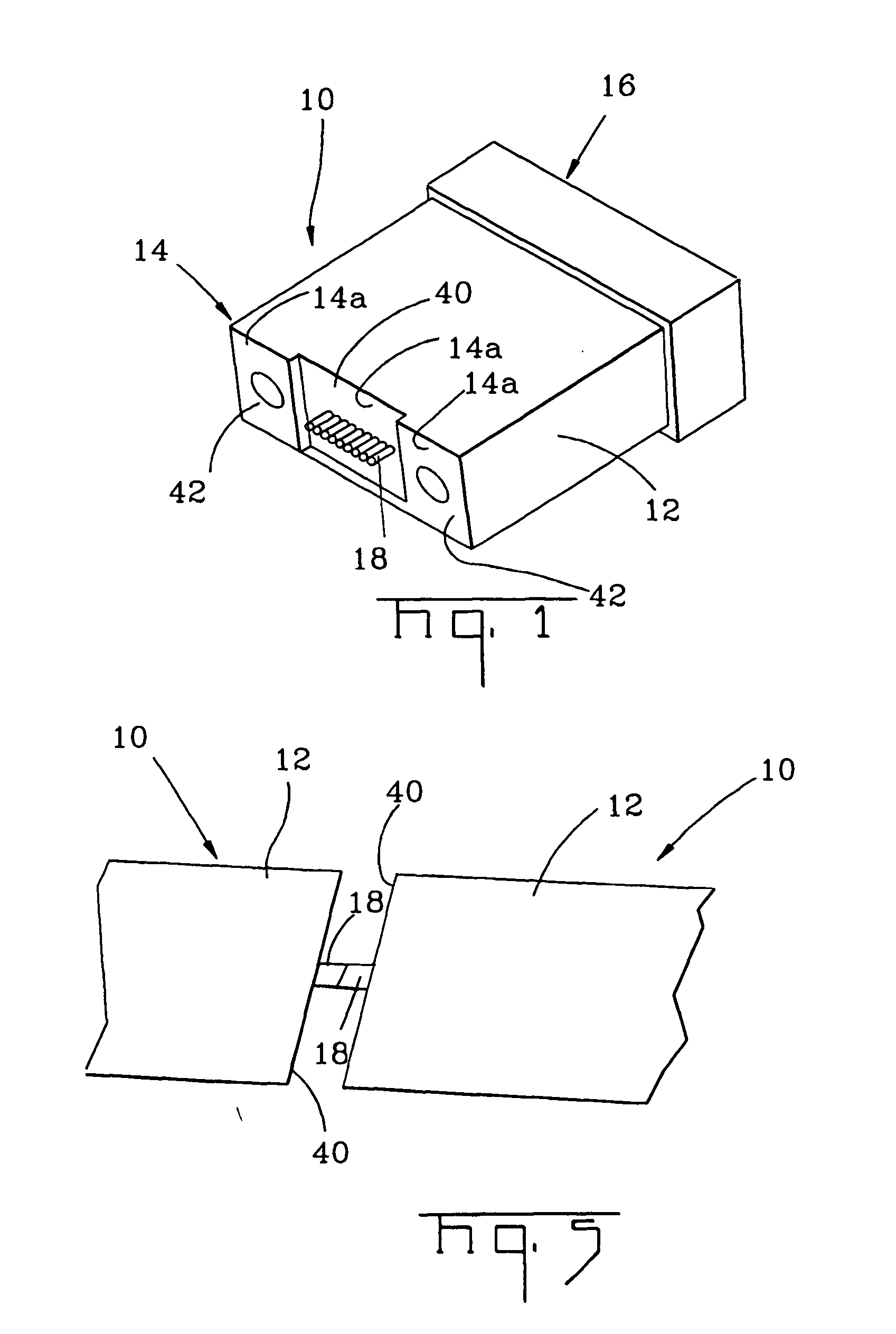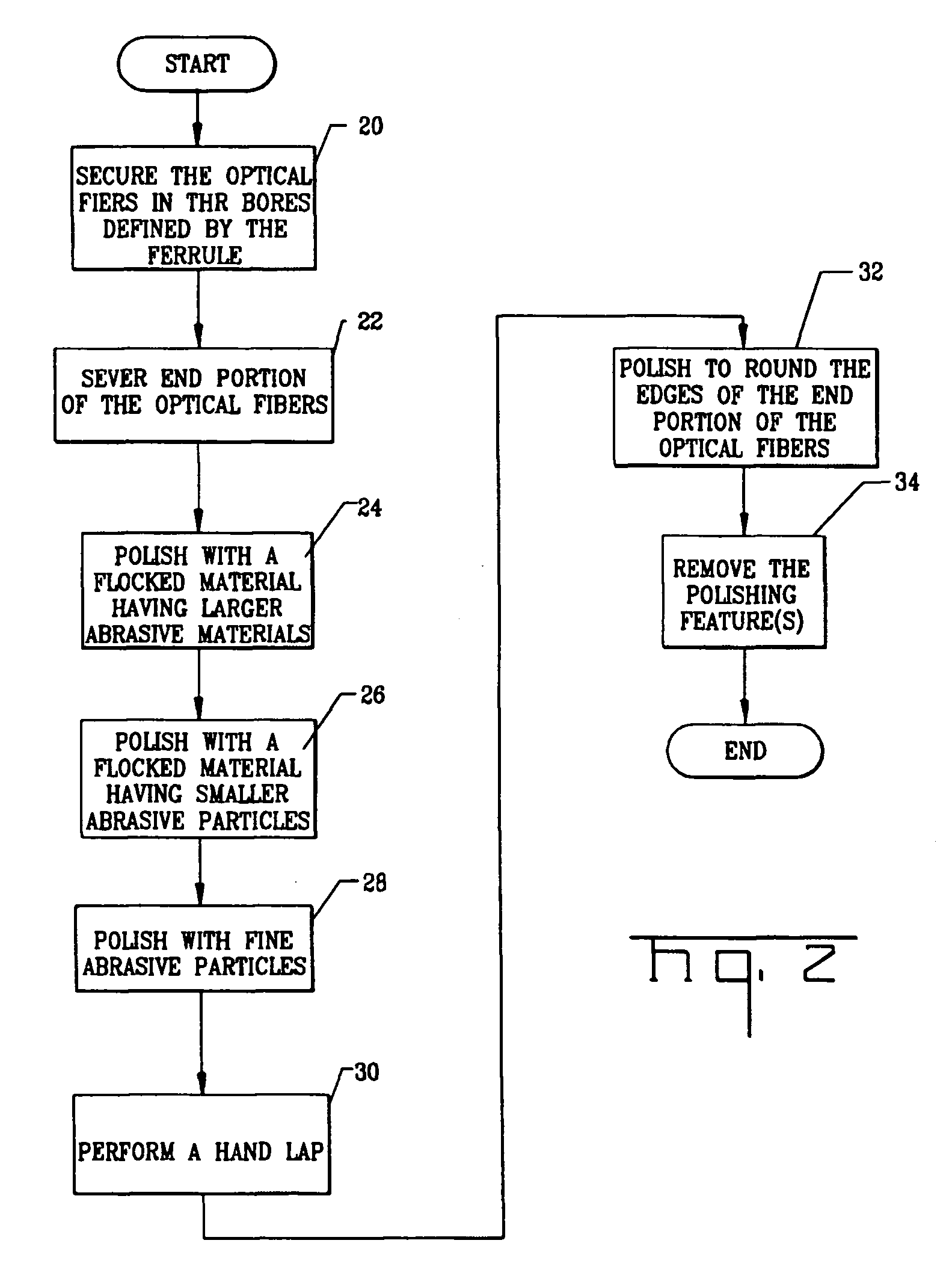Ferrule assembly having highly protruding optical fibers and an associated fabrication method
a technology of ferrules and assemblies, which is applied in the direction of optics, instruments, optical light guides, etc., can solve the problems of insufficient end portions of optical fibers that protrude beyond the front face of ferrules, and insufficient optical fiber protrusion of this magnitude, etc., to achieve efficient, precise and repeated effects
- Summary
- Abstract
- Description
- Claims
- Application Information
AI Technical Summary
Benefits of technology
Problems solved by technology
Method used
Image
Examples
Embodiment Construction
[0034] The present invention now will be described more fully hereinafter with reference to the accompanying drawings, in which preferred embodiments of the invention are shown. This invention may, however, be embodied in many different forms and should not be construed as limited to the embodiments set forth herein; rather, these embodiments are provided so that this disclosure will be thorough and complete, and will fully convey the scope of the invention to those skilled in the art. Like numbers refer to like elements throughout.
[0035] A ferrule assembly having highly protruding optical fibers and an associated method of fabricating ferrule assemblies are provided according to the present invention. As shown in FIG. 1, the ferrule assembly 10 includes a multifiber ferrule 12 extending between a front end 14 having a multi-section front face and an opposed rear end 16. The front face comprises surfaces 14a that are generally transverse with respect to the longitudinal axes of the...
PUM
 Login to View More
Login to View More Abstract
Description
Claims
Application Information
 Login to View More
Login to View More - R&D
- Intellectual Property
- Life Sciences
- Materials
- Tech Scout
- Unparalleled Data Quality
- Higher Quality Content
- 60% Fewer Hallucinations
Browse by: Latest US Patents, China's latest patents, Technical Efficacy Thesaurus, Application Domain, Technology Topic, Popular Technical Reports.
© 2025 PatSnap. All rights reserved.Legal|Privacy policy|Modern Slavery Act Transparency Statement|Sitemap|About US| Contact US: help@patsnap.com



